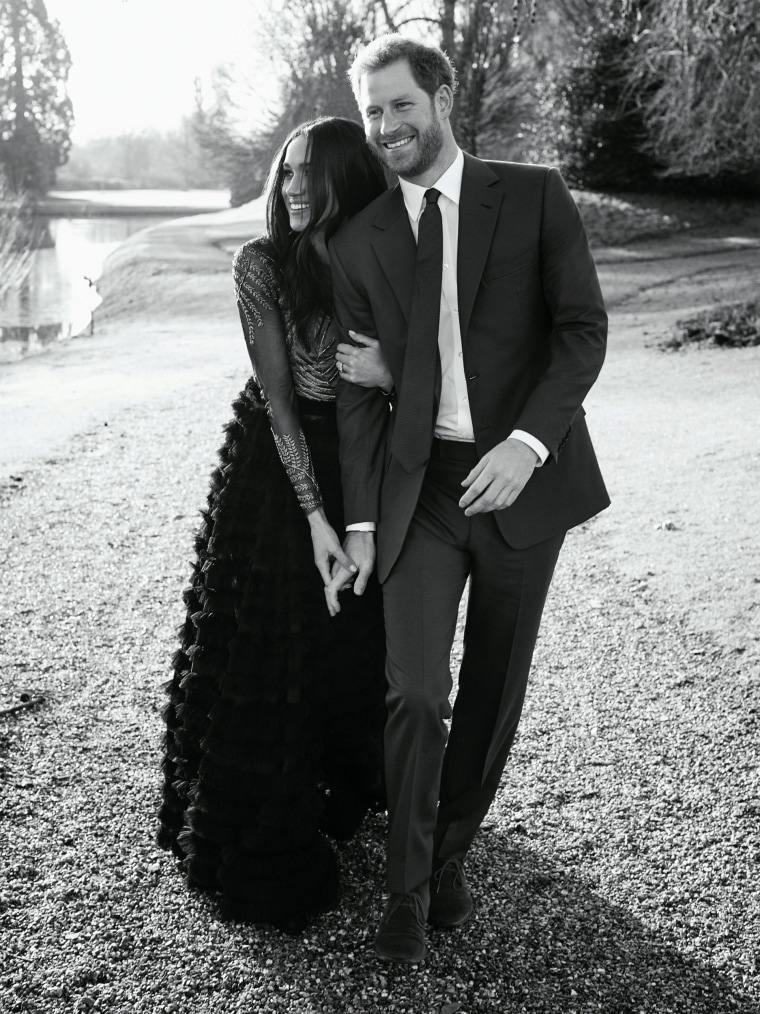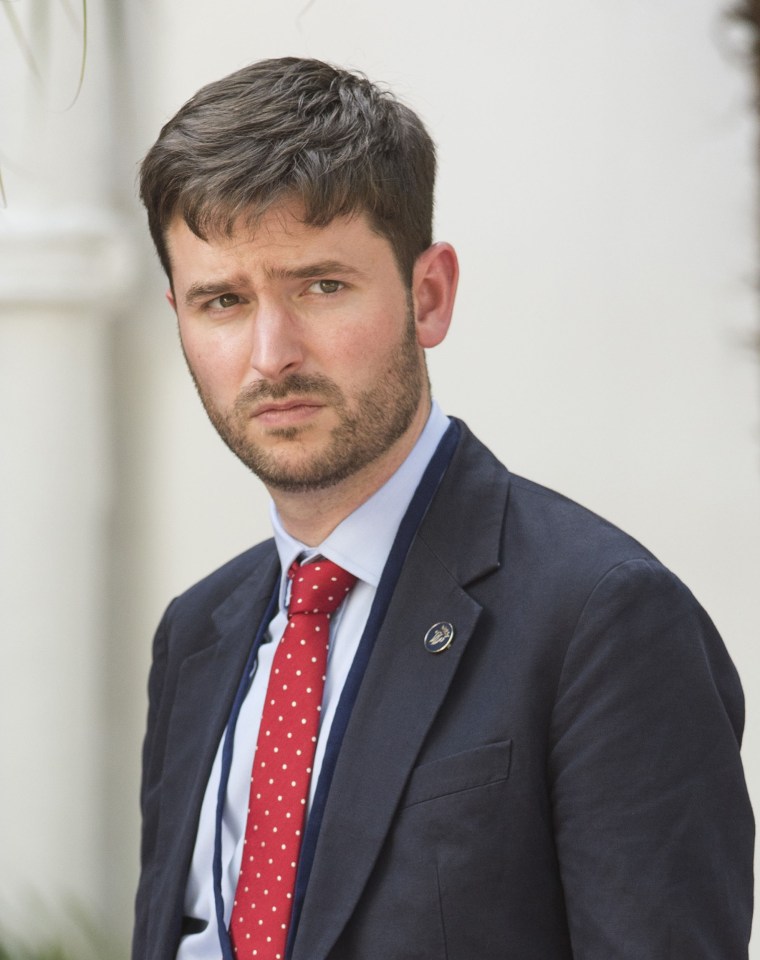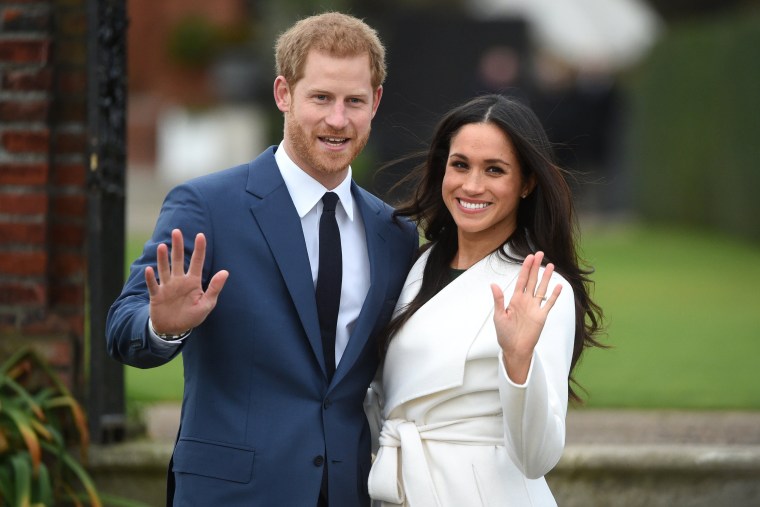Prince Harry and Meghan Markle conducted their carefully choreographed engagement photocall back in November beside a lake in the sunken garden at Kensington Palace, Princess Diana’s former residence.
At the event, the media was forced to shout questions across a pond and strained to hear the responses. It seemed to serve as a metaphor for how the couple would like to deal with the media — from a distance.
Harry’s relationship with the media has followed a predictable series of ups and downs as he navigated his teen years, joined the Army, traveled to Africa, and dated socialites before settling down with Markle, an American actress.
His current popularity has bought him some goodwill with the media, but his relationship with Markle has put both Harry and Kensington Palace’s press advisers to the test.
The engagement triggered a feeding frenzy focused almost entirely on Harry’s bride-to-be, leading Harry to draw the line after a British newspaper published a column about how Markle’s “exotic” blood would thicken the royal line. It added that Markle’s "dreadlocked" mother was “from the wrong side of the tracks.”
Kensington Palace’s communications secretary sent a strongly worded statement via social media about the harassment, warning the media to back off and suggesting that Harry was afraid for Markle’s safety.
Arthur Edwards, a photographer for The Sun newspaper, has been taking photos of the royal family for decades and remembers a more positive relationship with Harry, who would clown around and joke for the photographers when he was younger.
“He won’t put on a silly hat anymore,” Edwards said. “He is more circumspect and aware of his role in this royal family. He thought that he didn’t want to be a member of [it] anymore. He’s changed, he’s grown up and come to his senses.”

Once dubbed, the “Prankster Prince” by the British tabloids, Harry had been happy to play the fun-loving mischief maker to his sensible older brother Prince William, who is second in line to the British throne.
His escapades put Harry at odds with the media in his younger years. In 2005, he was photographed wearing a Nazi armband at a costume party which was splashed all over the newspapers. He later apologized.
He hit the headlines again in 2012, just before he deployed to Afghanistan as part of the British Army, when he joined a raucous pool party in Las Vegas and was filmed naked. The British press were warned against publishing photographs.
When Prince Charles was younger and dating, the press coverage was largely jovial, but the arrival and intense interest in Diana changed the nature of press relations altogether, pitting the various PR teams against each other as the media raced to document the breakdown of their marriage.
Many in the public attributed Diana’s death to media harassment, pointing to the paparazzi chasing her when the fatal car crash occurred in Paris.
William and Harry’s press relations were historically conducted by their father Charles’ communications team at Clarence House. It was run in its early days by Mark Bolland, who was serving in the role when Diana died.
He was followed by Patrick “Paddy” Harverson, who is credited with creating a more positive positioning for Charles’ second wife, Camilla, Duchess of Cornwall, and dealing with the press for the wedding of William and the Duchess of Cambridge, formerly Kate Middleton.
“In the past, it was always the case you could say anything you liked about [the royals] and they never retaliated,” said author and journalist Penny Junor. “That has absolutely changed with the young ones” after Diana's death.
The press operation became more aggressive in its approach. For instance, an article in The Sun headlined “Fizz Royal Highness” suggested that Harry had spent $10,000 on champagne at a nightclub. The newspaper later apologized for the story and wished him well with his exams.

When William, Kate and Harry moved their work operations into Kensington Palace, their press was managed by a notably younger team of executives in their 30s. William’s private secretary Miguel Head, who oversaw press relations at one point, stepped down in March. American Jason Knauf, who has been part of the communications team for three years, is now overseeing their relationship — including Markle’s — with the media.
Knauf is a former director of corporate affairs at the Royal Bank of Scotland and was also an adviser to the former prime minister of New Zealand, Helen Clark. He is currently being peppered with questions about how and where the public might see Harry kiss his bride-to-be. Knauf declined to answer the question. Meanwhile, The New York Times reported that just one reporter will be at the royal wedding.
Kensington Palace declined to comment.
The team representing the younger royals has also been faster to adopt a more modern relationship with the press. Their social team uses the Twitter handle @kensingtonroyal, for instance, to share the the Duchess of Cambridge’s photographs of their children, as well as images of royal wedding gowns and charity events.
Harry has also made documentaries to communicate his priorities, selling the rights to the work to raise money for charity. One documentary, “Forgotten Kingdom,” was about AIDS in Africa. Harry and William also created a documentary about their memories of their mother to commemorate the 20th anniversary of her death last year. Earlier this year, Harry played the role of journalist, interviewing former President Obama for BBC Radio 4.

In recent years, Harry has been more open about his emotions, giving The Telegraph newspaper’s Bryony Gordon a revealing interview about how he came to terms with his mother’s death and his struggles with mental health and “two years of chaos.”
Still the memories of their mother loom large.
At Diana’s funeral 20 years ago, her brother Charles Spencer gave a speech describing his sister as “the most hunted person of the modern age.” He pledged to “protect her boys, William and Harry, from a similar fate.”
The Spencers will be present at the wedding on Saturday, and reports suggest the rift between the Spencers and the royal family over Diana’s death may finally be healed.
In a series of secretly recorded interviews that formed the background for the book “Diana: Her True Story,” by Andrew Morton, Diana was asked about her greatest achievement in life. She responded: “To not bow down to pressure.”
For anyone getting married, the lead up to a wedding is an intense time. For Harry and Markle, every detail is under intense scrutiny. Even so, good relations with the press are a necessity regardless of feelings.
“They can’t bypass the media. It is the interface,” said Junor. “They need to be seen, the public needs to take an interest. Out of sight, they lose their relevance and it’s goodbye to the monarchy.”

